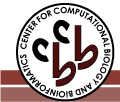| General information | | DisProt: | DP00469 | | Name: | Transcription factor HY5 | | Synonym(s): | HY5_ARATH
Protein LONG HYPOCOTYL 5
bZIP transcription factor 56
AtbZIP56
| | First appeared in release: | Release 3.5 (12/22/2006) | | UniProt: | O24646 | | UniGene: | At.20257 | | SwissProt: | HY5_ARATH | | TrEMBL: | | | NCBI (GI): | 20138463 | | Source organism: | Arabidopsis thaliana (Mouse-ear cress) | | Sequence length: | 168 | | Percent disordered: | 46% | | Homologues: | |
| Native sequence |
10 20 30 40 50 60
| | | | | |
MQEQATSSLA ASSLPSSSER SSSSAPHLEI KEGIESDEEI RRVPEFGGEA VGKETSGRES - 60
GSATGQERTQ ATVGESQRKR GRTPAEKENK RLKRLLRNRV SAQQARERKK AYLSELENRV - 120
KDLENKNSEL EERLSTLQNE NQMLRHILKN TTGNKRGGGG GSNADASL
|
| Functional narrative |
HY5 gene encodes a basic leucine zipper (bZIP) transcription factor that positively regulates photomorphogenesis. The HY5 protein is constitutively localized in the nucleus and is involved in light-dependent regulation of transcription from promoters that contain a G-box, one of several
light-response elements. Acts downstream of the light receptor network and directly affects transcription of light-induced genes. Specifically involved in blue-light specific pathway, suggesting that it participates in transmission of cryptochromes (CRY1 and CRY2) signals to downstream responses. In darkness, its degradation prevent the activation of light-induced genes. Physical and genetic interactions between HY5 and COP1 (a repressor of photomorphogenetic development) negatively regulate the level and activity of HY5 in a light-dependent manner. In darkness,
COP1 is enriched in the nucleus and interacts with HY5, resulting in 26S proteasome-mediated degradation of HY5. By contrast, in the light, COP1 is localized in the cytoplasm, and HY5 is stable and exists in abundance in the nucleus. Thus, light ultimately regulates the abundance of HY5 by regulating nuclear COP1 levels. Transcription factor that promotes photomorphogenesis in the light. Acts downstream of the light receptor network and directly affects transcription of light-induced genes. Specifically involved in blue-light specific pathway, suggesting that it participates in transmission of cryptochromes (CRY1 and CRY2) signals to downstream responses. In darkness, its degradation prevent the activation of light-induced genes.
|
| Map of ordered and disordered regions |


Note: 'Mouse' over a region to see the start and stop residues. Click on a region to see detailed information.
|
| Region 1 | | Type: | Disordered - Pre-Molten Globule | | Name: | N-terminal domain | | Location: | 1 - 77 | | Length: | 77 | | Region sequence: |
MQEQATSSLAASSLPSSSERSSSSAPHLEIKEGIESDEEIRRVPEFGGEAVGKETSGRES
GSATGQERTQATVGESQ | | Modification type: | Fragment
Native
| | PDB: | | | Structural/functional type: | Function arises via a pre-molten globule to order transition
| | Functional classes: | Molecular assembly
| | Functional subclasses: | Phosphorylation
Protein-DNA binding
| Detection methods:
- Sensitivity to proteolysis (277 K; pH: 7.4; 50 mM sodium phosphate, 100 mM NaCl; Trypsin digestion, 1:1000 (enzyme:protein))
- Circular dichroism (CD) spectroscopy, far-UV (298 K; pH: 7.4; 13.5-51 µM samples; 1-mm path length; 50 mM sodium phosphate, 100 mM NaCl, 1 mM EDTA, 1 mM PMSF)
- Nuclear magnetic resonance (NMR) (277 K; pH: 7.4; 15N-labeled protein between 60 and 200 µM; 50 mM sodium phosphate, 100 mM NaCl, 1 mM EDTA, 1 mM PMSF; in 90 % H2O/10 % D2O)
- SDS-PAGE gel, Aberrant mobility on
- Stability at thermal extremes (pH: 7.4; 50 mM sodium phosphate, 100 mM NaCl, 1 mM EDTA, 1 mM PMSF; monitored by CD at 222 nm; scan rate 1°C /min)
| References:
- Yoon MK, Shin J, Choi G, Choi BS. "Intrinsically unstructured N-terminal domain of bZIP transcription factor HY5." Proteins. 2006; 65(4): 856-66. PubMed: 17001643
| Comments:
|
| If you have any comments or wish to provide additional references to this protein or its disordered region(s), please click here to e-mail us. |
Disprot-footer
|










